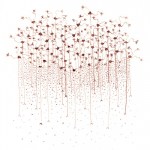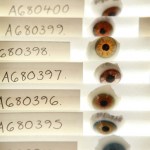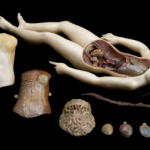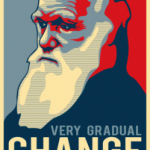history of science
I cannot write a full review of it yet as I am only about 70 pages in, but so far I am very impressed by Sigrid Schmalzer's new book The People's Peking Man: Popular Science and Human Identity in 20th Century Science. Most of what I have previously learned about "Peking Man" (Homo erectus specimens from Dragon Bone Hill) had to do with its identification of it as an early human that, at the time, confirmed that Asia was the birthplace of humans. Unfortunately the fossils were lost when scientists tried to ship them out of the country for safekeeping at the onset of WWII, but surprisingly the…
It appears that the Beagle Project crew will have a trial run on the Brazilian ship Tocorime - not a replacement for building the Beagle, but getting the feet wet, seeing what is involved, learning from the experience, before the Real Deal.
Funded by the British Council, they will circumnavigate around South America following that portion of the original Darwin's trip. From the proposal:
The year 2009 marks the bicentenary of Charles Darwin's birth. Without a doubt the greatest influence on Darwin and the development of his theory of evolution came during his travels in and around South…
I am not sure when it was recorded, but here is the audio (with pictures added by "CosmosFan1") from a lecture Stephen Jay Gould delivered at Wittenburg University in Ohio. There are a few unintentional flubs involving the dates Gould cites (that's 1859, not 1959...) but otherwise it's an interesting perspective on why Darwin's work was so important. Gould's take on Darwin's motivations for developing his theory get a bit speculative, but it is an interesting review all the same;
[My apologies, it seems that the remainder of this lecture has not been posted yet.]
Thought Patterns #1
blood on watercolor paper
Laura Splan, 2003
The International Museum of Surgical Science in Chicago is calling for proposals for "Anatomy in the Gallery:"
[This program] showcases medically themed contemporary art within the unique context of the Museum's historical collections and exhibits. The program was begun in 1998 to help fulfill the Museum's mission of enriching its visitors' lives by enhancing their knowledge and understanding of surgery and related sciences.
Previous exhibitors include Laura Splan (above), Laura Kurtenbach, Geraldine Ondrizek, and Dominic Paul…
In 1857 Richard Owen proposed that our species, Homo sapiens, belonged to a distinct subclass separate from all other primates. He called this new group the Archencephala and based it as much upon human powers of reason as minute neuroanatomical differences between apes and humans. What's more, our "extraordinarily developed brain[s]" not only placed us above all other creatures but gave us new moral responsibilities, and in closing Owen stated;
Thus [Man] fulfils his destiny as the master of this earth, and of the lower Creation.
Such are the dominating powers with which we, and we alone,…
Over a year ago, we had an idea: We were doing a book that discusses the work of the British physicist-novelist C.P. Snow, and the 50 year anniversary of his world famous "two cultures" argument was coming up--May 7, 2009. Precisely 50 years earlier, Snow had delivered a lecture at Cambridge University lamenting the gap between scientists and humanists, or as he called them then, "literary intellectuals," and suggesting it was a grave threat to policymaking and to the future.
We believe this is still a deeply important and resonant argument, and so we got in touch with the New York Academy of…
On November 8, 1882 the paleontologist O.C. Marsh, popular minister Henry Beecher, industrialist Andrew Carnegie, and other influential men of the late 19th century converged on Delmonico's Restaurant in New York. They were there to toast Herbert Spencer, the social scientist who had gone beyond Charles Darwin's studies of natural transmutation to outline the evolution of society itself. All present, in one way or another, had been influenced by Spencer's work, and they ate and pontificated long into the night despite the fact that the dyspeptic Spencer would rather not have been there in…
The Warren mastodon as originally mounted in the Warren Museum of Natural History. Note the size of the tusks. From The Story of Nineteenth-Century Science.
It is rarely crowded in the "Hall of Advanced Mammals" at the American Museum of Natural History. People stroll through on their way to see the dinosaurs and may stop to admire a fossil or two like the striking mount of Amphicyon, but the mammals just cannot compete with the star power of the archosaurs. This is a shame, for not only does the hall hold a weird and wonderful array of extinct creatures, but many people do not realize…
"Caught in an asphalt lake." From the November 1919 issue of The World's Work.
As much as I love visiting the American Museum of Natural History in its current incarnation I sometimes wish I could have seen the institution in earlier eras. It has undergone its own evolution and while plenty of classic and remarkable specimens remain on display there are many that have been removed, put in storage, or lost.
One such exhibit was the "asphalt lake" habitat group meant to portray the famous La Brea tar pits. I have no idea what became of it, but when on display it showed a Smilodon and a dire…
The Burlington County skull. From Hrdlicka's Skeletal Remains Suggesting or Attributed to Early Man in North America.
By 1859 it had become established that humans had a more ancient history than had previously been known, but just how old was Homo sapiens? This was a pivotal question, for the area of the world that could claim the oldest vestiges of humanity could provide crucial clues about the evolution and dispersal of our species. Asia, with its open plains and "vigorous climate", seemed like the best place to look for the stock from which humans arose but traces of prehistoric humans…
A drawer of antique glass eye fragments
Photograph: Peter Macdiarmid/Getty Images
via The Guardian
A new slideshow from The Guardian highlights some of the wonderful medical artifacts found at the new "Brought to Life" website.
I had initially intended to write this post to coincide with my birthday last week but my research unexpectedly set me on the trail of Saartje Baartman. Below is the essay I had originally set out to write;
What to do about Charles Lyell? In September of 1859 he had announced to the scientists assembled at the annual British Association for the Advancement of Science meeting that , contrary to previous belief, "it [was] probable that man was old enough to have coexisted, at least, with the Siberian mammoth." He also knew that the arrival of Charles Darwin's abstract on evolution by natural…
Archy does an amazing detective job on who stole what from whom in the old literature on mammoths, going back all the way to Lyell!
Then, as much of that literature is very old, he provides us with a history and timeline of the ideas of copyright and plagiarism so we could have a better grasp on the sense of the time in which these old copy+paste jobs were done.
[Last night New Brunswick was buried under several inches of snow, shutting down the university and giving me the day off. I have been using my free time to get some reading done and work on a few projects but I did not want to neglect this blog. Here are the first several pages of the chapter on human evolution from Life's Splendid Riddle, the book in-progress I have so often mentioned here. I still do not have an agent and am unsure whether this book will ever make it to shelves, but I could not resist sharing this sample with you. Enjoy.]
Not long after the earth had been given form, when…
If you're in New York tonight, head over to the mysterious new "Observatory" between Proteus Gowanus, Cabinet Magazine, and the Morbid Anatomy Library for
(1) a book release party for Confronting Mortality with Art and Science: Scientific and Artistic Impressions on what the Certainty of Death Says About Life;
(2) a film screening of Art:Science = Science x Art;
and (3) conversation with some really, really cool people. I'm jealous that i'm down here in DC - even if I do get to go see Adam Gopnik tonight at Politics and Prose. I'm going to have to pre-order this darn book on Amazon like…
Wax anatomical figure of reclining woman, Florence, Italy, 1771-1800
Science Museum London
Starting today, the Wellcome Trust and sciencemuseum.org.uk open a brand spanking new collection of medical history archives. "Brought to Life: Exploring the History of Medicine" is searchable by people, place, thing, theme, and time. You can view a timeline of medical history in Europe next to similar timelines for the Islamic empire, Egypt and Greece (I do wish China and India were as prominently placed). You can read essays about larger questions, like what "wellness" means, or play with a cool…
image by Mike Rosulek
buy merchandise here to benefit NCSE
It's a classic question: if Charles Darwin had known about Gregor Mendel's genetic research, would Darwin have realized it was the missing piece he needed to explain how individual variation was inherited and selected? Was it simply bad luck that Darwin never stumbled on the right experiments? Or was Darwin so constrained by his own perspective on inheritance that he couldn't have seen the importance of Mendel's work, even if he had known about it?
Jonathan Howard has written an intriguing overview of this question. He argues that…
Perhaps we are all subject to falling into the trap of what I call the Hydraulic Theory of Everything. If you eat more you will be bigger, if you eat less you will be smaller. Emotional states are the continuously varying outcome of different levels of a set of hormones, forming "happy" or "stressy" or "angry" cocktails. Your brain is a vessel into which life pours various elixirs. Too much of one thing, and there will not be enough room for something else. Even political arguments are hydraulic. The 'balanced' middle view between two arguments is like the mixture of contrasting primary…
The "Hottentot Venus", drawn from a wax cast made in Paris. From The Human Race.
On December 31, 1816 Saartje Baartman died in Paris. She had been ill for three days, perhaps stricken with smallpox, before she and her unborn child expired. Better known as the "Hottentot Venus", Baartman was a celebrity in Europe known for being the antithesis of the European concept of beauty. She was a dark-skinned member of the Khoikhoi tribe of South Africa* with buttocks so large that they mesmerized Europeans. She was treated as a sideshow attraction, marveled at by scholars and the public alike.
*[I…
The skull of Gomphotherium, from Barbour's paper.
Regular readers of this blog are well aware that the "March of Progress", a depiction of the single-file evolution of humans from an ape ancestor, is a biological bugbear that refuses to go away. Even though the Great Chain of Being ceased to be useful in explaining the natural world centuries ago vestiges of it still remain in illustrations that depict evolution as "onward and upward." We have long known that evolution is a branching process yet the straight-line version is frustratingly difficult to dig out.
I was reminded of this while…



